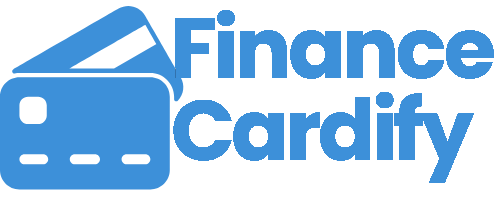Think back to your school days. You learned about the Pythagorean theorem, the causes of World War I, and the chemical composition of water. All valuable knowledge in their own right. But what about money? Where were the lessons on compound interest, mortgages, or the importance of a credit score? For most of us, these critical life skills were missing from the curriculum.
We are taught how to earn money, but not how to manage it, make it grow, or protect it. This gap in our education leaves many of us unprepared to navigate the complexities of the modern financial world. We are left to learn by trial and error, often making costly mistakes along the way.
So, why isn’t financial literacy a core part of our education? The reasons are complex, but they generally boil down to a few key areas: an outdated curriculum, a lack of qualified teachers, and the deeply personal nature of financial decisions.
The Missing Fundamentals of a Financial Education
When we talk about what’s missing from our school curriculum, we’re not just talking about advanced investment strategies. We’re talking about the fundamental, everyday knowledge that could change the trajectory of someone’s life.
- The Power of Compound Interest: Albert Einstein reportedly called compound interest the “eighth wonder of the world.” Yet, few of us were taught how it works. We should have learned that saving even a small amount early in life can lead to significant wealth. A simple lesson showing how a $100 monthly investment from age 20 to 30 will be worth far more at age 60 than the same investment started at age 30 and continued until 60 could have been a powerful motivator. This knowledge transforms saving from a chore into a superpower.
- Understanding Credit and Debt: Most people learn about credit scores and debt the hard way—when they try to buy a car or a home and are denied, or when they find themselves buried under a mountain of high-interest credit card debt. School could have provided a clear understanding of what a credit score is, why it matters, and how to build and maintain a good one. Instead, we are often thrown into a world of credit cards and loans with no instruction manual.
- Budgeting and Cash Flow: The concept of living within your means seems simple, but it’s a skill that must be practiced. A basic class on creating a budget, tracking expenses, and distinguishing between needs and wants could have been revolutionary. This isn’t just about managing money; it’s about making conscious choices and taking control of your financial life.
- The Art of Saving and Investing: We are taught to save, but rarely are we taught where to put that money. The difference between a simple savings account and a high-yield savings account is a basic but important lesson. Furthermore, the fundamentals of investing—understanding stocks, bonds, and mutual funds—could have demystified the process and made it accessible to everyone, not just those with inherited wealth or a background in finance.
The Societal and Educational Barriers
If these topics are so important, why are they not standard?
- The Overloaded Curriculum: Schools are already trying to teach a vast amount of information. There’s a constant debate over what to include and what to cut. Many educational leaders and policymakers see core subjects like math, science, and literature as more essential than personal finance. They believe that schools should focus on foundational knowledge and that financial education is a responsibility of parents.
- Lack of Teacher Training and Comfort: Most teachers were not trained in financial literacy. They are experts in their specific subjects. Asking a history teacher to explain the stock market or a science teacher to break down the pros and cons of a 401(k) is an unfair and impractical expectation. Creating a new curriculum and training all teachers would require significant time and resources that many school districts simply don’t have.
- Financial Privacy and Personal Values: Money is a sensitive and often private topic. Families have different financial habits and values. Some parents might be uncomfortable with schools teaching their children about money, feeling that it’s a topic best handled at home. This can create a pushback against incorporating financial literacy into the curriculum.
- The Ever-Changing Financial Landscape: The world of finance is constantly evolving. What was relevant 20 years ago may not be today. Trying to keep a financial literacy curriculum updated with the latest trends, technologies, and regulations is a massive challenge for any educational system.
Taking Control of Your Financial Education
The good news is that we live in the age of information. The lessons we didn’t receive in school are now readily available.
- Read Books and Blogs: There is a wealth of information out there from financial experts. Books like “The Total Money Makeover” by Dave Ramsey or “I Will Teach You to Be Rich” by Ramit Sethi are excellent starting points. Many financial blogs offer practical, actionable advice for free.
- Use Free Online Resources: Websites like NerdWallet, Investopedia, and the Federal Reserve’s educational tools provide clear explanations of complex financial topics. YouTube channels and podcasts dedicated to personal finance offer engaging content that can make learning feel less like a chore.
- Find a Mentor or Join a Community: Talk to a financially savvy friend, family member, or a professional. Joining online communities or local groups focused on personal finance can provide support, accountability, and new perspectives.
The absence of financial education in our schools is a systemic issue, but it doesn’t have to define our financial future. By taking a proactive approach to our own education, we can fill in the gaps and build a stronger, more secure financial foundation. The knowledge is out there, and the power to change our relationship with money is in our hands.





